#Admin Dashboard UI
Explore tagged Tumblr posts
Text
How to Integrate Your Database Data with External APIs
Application programming interfaces (APIs) are tools that allow you to take action with your data. APIs enable you to connect programs with external sources, such as databases, to create dynamic applications that provide real value to users. At their core, APIs are a set of protocols that govern how different applications exchange data, serving as an intermediary between client and server programs.
The Benefits of Using APIs
There are many reasons to utilize an admin dashboard UI to connect your data to external APIs. The biggest is to enhance the user experience. APIs can greatly improve an application's functionality, creating a data-driven experience that benefits customers, end users and even in-house data teams.
Furthermore, APIs can reduce the costs and complexities of web development. They allow you to scale your applications while significantly improving their performance.
How to Use External APIs
The first step in integrating your database data with an external API is to obtain an API key. That involves registering with the API provider. It's also wise to read all API documentation, ensuring you understand how it works, what data formats it supports, etc.
Then, you must choose which tools and languages you'll use to write and send requests to the API endpoint. Some of the most common include JavaScript, Postman, curl and Python. When integrating the external API, you use those languages to generate and send requests. The API will then produce responses with the requested data in JSON, CSV or XML formats.
Many tools and languages are available to parse those responses and make sense of the data received. From there, your goal is to decide how you display and manipulate the data received from the API. How you approach that task will depend on its purpose.
There are many ways to integrate database data with an external API. But one of the most efficient is to use an admin dashboard UI. With the right tools, you can connect your database to various APIs and put your data to good use. Define attributes of the API connection, track action history, monitor statuses and more.
Master your operations: access the ultimate admin panel now! Click for streamlined management and effortless control.
0 notes
Text
Upgrade Project Design with Minimal lite Bootstrap Admin Template
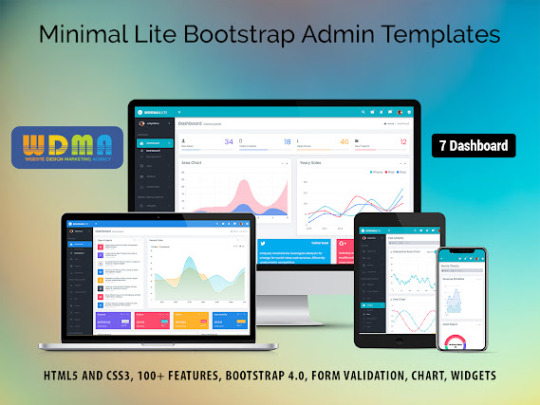
Minimal Lite – Responsive Web Application Kit boasts an extensive array of functionalities, including mobile responsiveness, flexible colour palettes, data presentation utilities, and intuitive interfaces. This Responsive Web Application Kit seamlessly integrates with numerous plugins and add-ons, enriching the administrative dashboard's capabilities. Minimal Lite comes complete with pre-built components, widgets, and styling alternatives, streamlining the development journey. Leveraging the Latest Bootstrap Beta Framework, alongside cutting-edge technologies HTML5 and CSS3, this Premium Admin Template ensures agility and adaptability. Lightweight and highly adaptable, it caters specifically to developers seeking customization options. For inquiries and acquisition of our sophisticated Bootstrap Admin Template.
#Responsive Web Application Kit#Responsive Admin Dashboard Template#Premium Admin Template#Bootstrap Admin Web App#Admin Dashboard Ui Kit#Dashboard Design#Admin Panel Dashboard#Admin Theme#WebApp Template#Dashboard UI Kit
0 notes
Text
Mplify - Versatile Bootstrap 4 Admin Template by Thememakker
Mplify Admin makes the development process easy and fast for you and aims to help you implement your idea in real time.
Product Highlights
Mplify is a fully professional, responsive, modern, multi-purpose, and feature-rich admin template. It can be used to create various websites, admin templates, admin dashboards, backend websites, CMS, CRM, blogs, business websites, timelines, and portfolios. This versatility makes it an ideal choice for developers looking to build functional and aesthetically pleasing web applications efficiently.
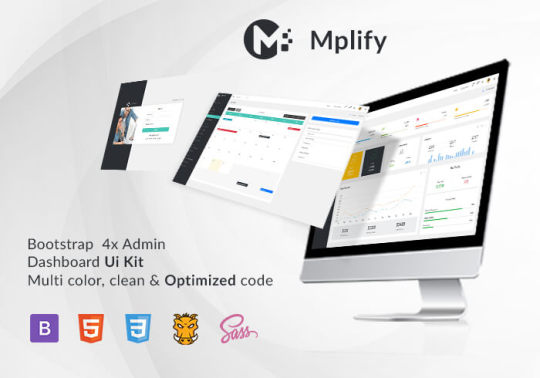
Key Features
Bootstrap 4.3.1: Ensures compatibility and modern design standards.
jQuery 3.3.1: Offers extensive plugins and support.
Built-in SCSS: Provides more flexibility and control over styles.
Light & Dark Full Support: Allows users to switch between light and dark themes.
RTL Full Support: Right-to-left language support for global accessibility.
W3C Validate Code: Ensures high coding standards and practices.
Mobile and Tablet Friendly: Responsive design for all devices.
Treeview: For hierarchical data display.
Drag & Drop Upload: Simplifies file uploading processes.
Image Cropping: Integrated tools for editing images.
Summernote: Rich text editor integration.
Markdown: Support for markdown formatting.
Beautiful Inbox Interface: User-friendly email management.
User-Friendly Chat App: Built-in chat application.
Scrum & Kanban Taskboard: Task management tools.
Add Events to Your Calendar: Event management capabilities.
File Manager: Efficient file organization and management.
Blogging: Tools to manage and create blog posts.
Testimonials: Features to showcase user testimonials.
Maintenance: Tools to manage and schedule maintenance.
Team Board: Collaboration tools for team management.
Search Result: Enhanced search functionalities.
Beautiful Pricing: Elegant pricing tables and plans.
Contact List & Grid: Efficient contact management.
User Profile: Customizable user profiles.
Extended Forms: Advanced form functionalities.
Clean Widgets: A variety of clean, modern widgets.
Technical Specifications
Bootstrap 4.3.1
Bootstrap 4.3.1 is a powerful front-end framework for faster and easier web development. It includes HTML and CSS-based design templates for typography, forms, buttons, tables, navigation, modals, image carousels, and many other interface components, as well as optional JavaScript plugins. Mplify leverages Bootstrap 4.3.1 to ensure a consistent and responsive design across all devices.
jQuery 3.3.1
jQuery is a fast, small, and feature-rich JavaScript library. It makes things like HTML document traversal and manipulation, event handling, and animation much simpler with an easy-to-use custom API integration that works across a multitude of browsers. Mplify includes jQuery 3.3.1 to provide enhanced functionality and interactivity to your applications.
Built-in SCSS
SCSS is a preprocessor scripting language that is interpreted or compiled into CSS. It allows you to use variables, nested rules, mixins, inline imports, and more, all with a fully CSS-compatible syntax. With SCSS, Mplify offers a more powerful and flexible way to manage styles.
Light & Dark Full Support
Mplify comes with built-in support for light and dark themes, allowing users to switch between these modes based on their preferences. This feature enhances user experience and accessibility, especially in different lighting conditions.
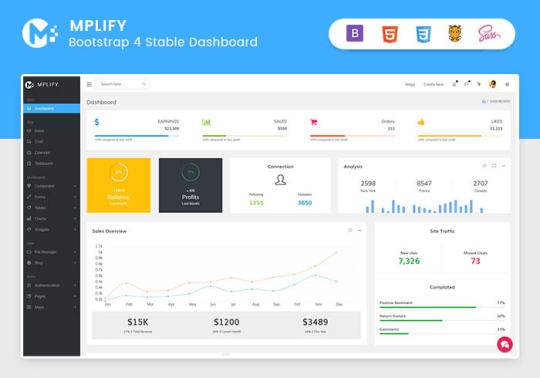
RTL Full Support
For developers targeting global audiences, Mplify provides full right-to-left (RTL) language support. This feature ensures that languages like Arabic, Hebrew, and Persian are properly displayed, making the template versatile and inclusive.
W3C Validate Code
The World Wide Web Consortium (W3C) sets the standards for web development. Mplify adheres to W3C's coding standards, ensuring that the template is built with clean, valid code, which improves browser compatibility, SEO, and overall performance.
Mobile and Tablet Friendly
In today's mobile-first world, having a responsive design is crucial. Mplify is designed to be fully responsive, ensuring that your mobile application looks great and functions seamlessly on all devices, including desktops, tablets, and smartphones.
Applications
Mplify’s versatile design and feature set make it suitable for a wide range of applications across various industries. Here are some key applications:
Admin Dashboards
Mplify provides a robust framework for building admin dashboards. With its extensive set of UI components, charts, forms, and tables, you can create comprehensive dashboards that provide valuable insights and data visualization.
CMS (Content Management Systems)
With features like blogging, file management, and user profile management, Mplify can be used to build powerful CMS platforms. Its clean widgets and beautiful interface ensure that the content management experience is both efficient and enjoyable.
CRM (Customer Relationship Management)
Mplify’s built-in tools for managing contacts, scheduling events, and maintaining communication through a chat app make it an excellent choice for developing CRM systems. These features help businesses manage customer interactions and data effectively.
Business Websites
The multi-purpose nature of Mplify allows it to be used for various business websites. Whether you need a portfolio, a blog, or a corporate website, Mplify provides the necessary tools and components to create a professional online presence.
Blogging Platforms
With integrated tools like Summernote for rich text editing and Markdown support, Mplify is ideal for creating blogging platforms. The beautiful inbox interface and testimonial features enhance the blogging experience, making it easy to manage and publish content.
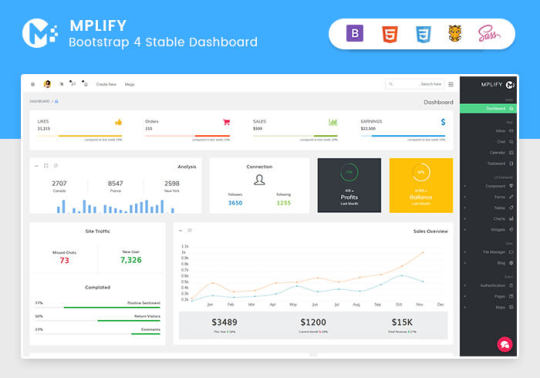
Benefits
Easy and Fast Development
Mplify is designed to streamline the development process. With its pre-built components and templates, you can quickly assemble functional and aesthetically pleasing applications. This reduces development time and costs, allowing you to focus on implementing your ideas in real time.
Professional and Modern Design
Mplify offers a clean, modern design that is both professional and user-friendly. The template includes a variety of customizable widgets and components that adhere to the latest design standards, ensuring your application looks polished and up-to-date.
Comprehensive Feature Set
From task management tools like Scrum and Kanban boards to extensive form functionalities, Mplify provides a wide range of features that cater to various needs. This comprehensive feature set makes it a versatile solution for different types of projects.
Responsive and Mobile-Friendly
With Mplify, you can ensure that your application is accessible on all devices. Its responsive design adapts to different screen sizes, providing a seamless user experience on desktops, tablets, and smartphones.
Global Accessibility
Mplify’s RTL support and multi-language capabilities make it suitable for global applications. This feature ensures that your application can cater to users from different regions, enhancing its reach and usability.
Regular Updates and Support
When you purchase a license for Mplify, you receive all future updates for free. This ensures that your application remains up-to-date with the latest features and improvements. Additionally, Mplify provides excellent customer support to assist with any issues or queries.
Challenges and Limitations
Learning Curve
While Mplify is designed to be user-friendly, there may be a learning curve for beginners who are not familiar with Bootstrap or jQuery. However, comprehensive documentation and community support can help mitigate this challenge.
Customization
Although Mplify offers a wide range of customization options, extensive customization may require advanced knowledge of SCSS and JavaScript. This could be a limitation for developers who are not well-versed in these technologies.
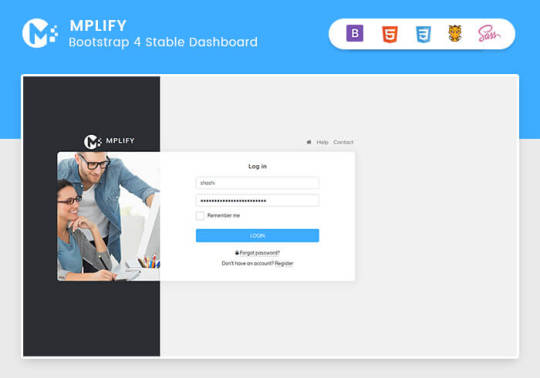
Performance
As with any feature-rich template, there is a potential for performance issues if too many components and plugins are used simultaneously. It is important to optimize the application and selectively use features to maintain optimal performance.
Latest Innovations
Enhanced UI Components
Mplify continues to evolve with regular updates that introduce new and improved UI components. These enhancements ensure that your application remains modern and functional.
Advanced-Data Visualization
Recent updates have focused on improving data visualization capabilities. With enhanced charting tools and interactive elements, Mplify allows for more dynamic and engaging data presentation.
Integration with New Technologies
Mplify is continuously updated to integrate with the latest web technologies. This ensures compatibility with new frameworks and libraries, providing developers with more tools to build advanced applications.
Future Prospects
AI and Machine Learning Integration
The future of Mplify may include integration with AI and machine learning tools. This would enable developers to build more intelligent and automated applications, enhancing user experience and functionality.
Expanded Plugin Support
As the web development landscape evolves, Mplify is likely to expand its plugin support. This will provide developers with more options for extending the functionality of their applications.
Improved Accessibility Features
Mplify is expected to continue enhancing its accessibility features. This includes better support for assistive technologies and compliance with accessibility standards, ensuring that applications built with Mplify are inclusive for all users.
Comparative Analysis
Versus Other Bootstrap Templates
When compared to other Bootstrap templates, Mplify stands out due to its comprehensive feature set, modern design, and extensive customization options. While other templates may offer similar components, Mplify's unique features like RTL support and advanced task management tools give it an edge.
Versus Custom Development
Opting for a pre-built template like Mplify can significantly reduce development time and costs compared to custom web development. While custom development offers more flexibility, Mplify provides a robust foundation that can be easily customized to meet specific needs.
User Guides and Tutorials
Getting Started with Mplify
Installation: Download and install Mplify from the official website or marketplace.
Configuration: Configure the template settings according to your project requirements.
Customization: Use the built-in SCSS files to customize the styles and appearance.
Integration: Integrate Mplify with your backend systems and databases.
Deployment: Deploy your application on your preferred hosting platform.
Advanced Customization Techniques
SCSS Variables: Use SCSS variables to easily change colors, fonts, and other styles.
JavaScript Customization: Extend the functionality by adding custom JavaScript code.
Component Modification: Modify existing components or create new ones to meet specific needs.
Performance Optimization: Optimize the performance by minifying CSS and JavaScript files, and selectively loading components.
Conclusion
Mplify is a powerful, versatile, and user-friendly Bootstrap 4 admin dashboard template. It offers a wide range of features and customization options, making it suitable for various applications, from admin dashboards to business websites. With its modern design, responsive layout, and extensive documentation, Mplify simplifies the development process, allowing developers to implement their ideas in real time efficiently.
Whether you are building a CMS, CRM, or a personal blog, Mplify provides the tools and flexibility needed to create a professional and functional web application. Its ongoing updates and support ensure that your projects remain current and compatible with the latest web technologies.
#Mplify Admin#Bootstrap 4.3.1#jQuery 3.3.1#SCSS#Light & Dark Theme#RTL Support#W3C Validation#Responsive Design#Admin Template#Admin Dashboard#CMS#CRM#Blogging#Business Websites#Web Development#UI Components#Data Visualization#AI Integration#Machine Learning#Accessibility Features#Task Management#File Management#Rich Text Editor#Markdown Support#User Profiles#Performance Optimization#Web Technologies#Custom Development#Web Application Development#Front-end Framework
0 notes
Text
Mosaic Lite: Free Dashboard Tailwind CSS Template
This is a Mosiac Lite: a free dashboard CSS template built using Tailwind CSS. The template also comes in three versions: React, Vue, and Laravel. Continue reading Untitled
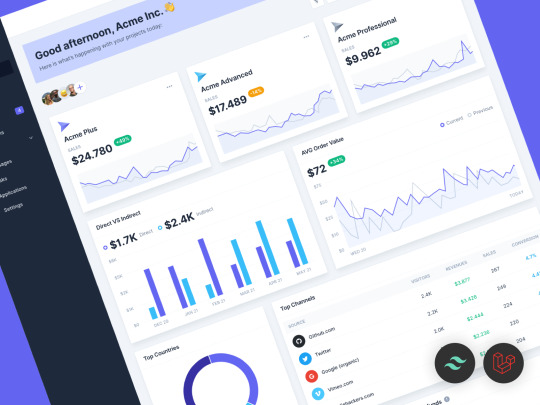
View On WordPress
#Admin#Code#CSS#CSS3#Dashboard#Figma#HTML#HTML5#Javascript#Layout#React#Resource#Responsive#Sketch App#Template#UI#Vue.js#Web Design#Web Development#Widget
0 notes
Text
#Playstation7 #framework #BasicArchitecture #RawCode #RawScript #Opensource #DigitalConsole
To build a new gaming console’s digital framework from the ground up, you would need to integrate several programming languages and technologies to manage different aspects of the system. Below is an outline of the code and language choices required for various parts of the framework, focusing on languages like C++, Python, JavaScript, CSS, MySQL, and Perl for different functionalities.
1. System Architecture Design (Low-level)
• Language: C/C++, Assembly
• Purpose: To program the low-level system components such as CPU, GPU, and memory management.
• Example Code (C++) – Low-Level Hardware Interaction:
#include <iostream>
int main() {
// Initialize hardware (simplified example)
std::cout << "Initializing CPU...\n";
// Set up memory management
std::cout << "Allocating memory for GPU...\n";
// Example: Allocating memory for gaming graphics
int* graphicsMemory = new int[1024]; // Allocate 1KB for demo purposes
std::cout << "Memory allocated for GPU graphics rendering.\n";
// Simulate starting the game engine
std::cout << "Starting game engine...\n";
delete[] graphicsMemory; // Clean up
return 0;
}
2. Operating System Development
• Languages: C, C++, Python (for utilities)
• Purpose: Developing the kernel and OS for hardware abstraction and user-space processes.
• Kernel Code Example (C) – Implementing a simple syscall:
#include <stdio.h>
#include <unistd.h>
int main() {
// Example of invoking a custom system call
syscall(0); // System call 0 - usually reserved for read in UNIX-like systems
printf("System call executed\n");
return 0;
}
3. Software Development Kit (SDK)
• Languages: C++, Python (for tooling), Vulkan or DirectX (for graphics APIs)
• Purpose: Provide libraries and tools for developers to create games.
• Example SDK Code (Vulkan API with C++):
#include <vulkan/vulkan.h>
VkInstance instance;
void initVulkan() {
VkApplicationInfo appInfo = {};
appInfo.sType = VK_STRUCTURE_TYPE_APPLICATION_INFO;
appInfo.pApplicationName = "GameApp";
appInfo.applicationVersion = VK_MAKE_VERSION(1, 0, 0);
appInfo.pEngineName = "GameEngine";
appInfo.engineVersion = VK_MAKE_VERSION(1, 0, 0);
appInfo.apiVersion = VK_API_VERSION_1_0;
VkInstanceCreateInfo createInfo = {};
createInfo.sType = VK_STRUCTURE_TYPE_INSTANCE_CREATE_INFO;
createInfo.pApplicationInfo = &appInfo;
vkCreateInstance(&createInfo, nullptr, &instance);
std::cout << "Vulkan SDK Initialized\n";
}
4. User Interface (UI) Development
• Languages: JavaScript, HTML, CSS (for UI), Python (backend)
• Purpose: Front-end interface design for the user experience and dashboard.
• Example UI Code (HTML/CSS/JavaScript):
<!DOCTYPE html>
<html>
<head>
<title>Console Dashboard</title>
<style>
body { font-family: Arial, sans-serif; background-color: #282c34; color: white; }
.menu { display: flex; justify-content: center; margin-top: 50px; }
.menu button { padding: 15px 30px; margin: 10px; background-color: #61dafb; border: none; cursor: pointer; }
</style>
</head>
<body>
<div class="menu">
<button onclick="startGame()">Start Game</button>
<button onclick="openStore()">Store</button>
</div>
<script>
function startGame() {
alert("Starting Game...");
}
function openStore() {
alert("Opening Store...");
}
</script>
</body>
</html>
5. Digital Store Integration
• Languages: Python (backend), MySQL (database), JavaScript (frontend)
• Purpose: A backend system for purchasing and managing digital game licenses.
• Example Backend Code (Python with MySQL):
import mysql.connector
def connect_db():
db = mysql.connector.connect(
host="localhost",
user="admin",
password="password",
database="game_store"
)
return db
def fetch_games():
db = connect_db()
cursor = db.cursor()
cursor.execute("SELECT * FROM games")
games = cursor.fetchall()
for game in games:
print(f"Game ID: {game[0]}, Name: {game[1]}, Price: {game[2]}")
db.close()
fetch_games()
6. Security Framework Implementation
• Languages: C++, Python, Perl (for system scripts)
• Purpose: Ensure data integrity, authentication, and encryption.
• Example Code (Python – Encrypting User Data):
from cryptography.fernet import Fernet
# Generate a key for encryption
key = Fernet.generate_key()
cipher_suite = Fernet(key)
# Encrypt sensitive user information (e.g., account password)
password = b"SuperSecretPassword"
encrypted_password = cipher_suite.encrypt(password)
print(f"Encrypted Password: {encrypted_password}")
# Decrypting the password
decrypted_password = cipher_suite.decrypt(encrypted_password)
print(f"Decrypted Password: {decrypted_password}")
7. Testing and Quality Assurance
• Languages: Python (for automated tests), Jest (for JavaScript testing)
• Purpose: Unit testing, integration testing, and debugging.
• Example Unit Test (Python using unittest):
import unittest
def add(a, b):
return a + b
class TestGameFramework(unittest.TestCase):
def test_add(self):
self.assertEqual(add(10, 20), 30)
if __name__ == '__main__':
unittest.main()
8. Order of Implementation
• Phase 1: Focus on core system architecture (low-level C/C++) and OS development.
• Phase 2: Develop SDK and start building the basic framework for UI and input management.
• Phase 3: Work on backend systems like the digital store and integrate with front-end UI.
• Phase 4: Begin rigorous testing and debugging using automated test suites.
This comprehensive approach gives you a detailed idea of how each component can be built using a combination of these languages and technologies. Each section is modular, allowing teams to work on different aspects of the console simultaneously.
[Pixel Art/Sprites/Buildinodels/VictoriaSecretPixelArtKit #Playstation7 #DearDearestBrands]
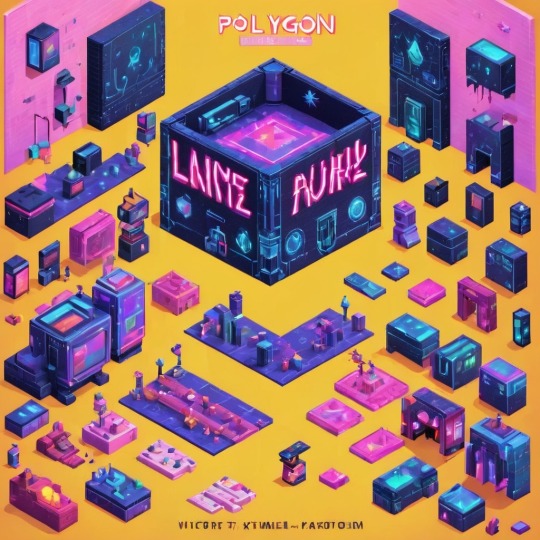
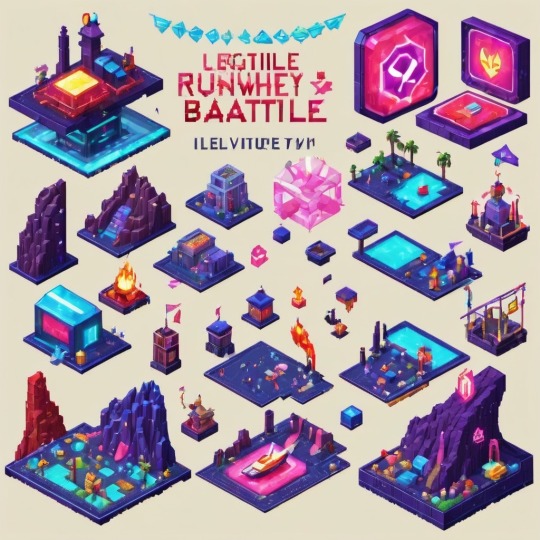
#victoriasecretrunway#runwaybattle#victoria secret fashion#victoria secert model#victoriasecret#victoria secret#VictoriaSecretRunwayBattle#capcom victoriasecret#capcom videogames#playstation7#ps7#deardearestbrands#capcom#digitalconsole#python#script#rawscript#raw code#framework#VictoriaSecretVideoGame#deardearestbrandswordpress
2 notes
·
View notes
Text
Build a Seamless Crypto Exchange Experience with Binance Clone Software

Binance Clone Script
The Binance clone script is a fully functional, ready-to-use solution designed for launching a seamless cryptocurrency exchange. It features a microservice architecture and offers advanced functionalities to enhance user experience. With Plurance’s secure and innovative Binance Clone Software, users can trade bitcoins, altcoins, and tokens quickly and safely from anywhere in the world.
This clone script includes essential features such as liquidity APIs, dynamic crypto pairing, a comprehensive order book, various trading options, and automated KYC and AML verifications, along with a core wallet. By utilizing our ready-to-deploy Binance trading clone, business owners can effectively operate a cryptocurrency exchange platform similar to Binance.
Features of Binance Clone Script
Security Features
AML and KYC Verification: Ensures compliance with anti-money laundering and know-your-customer regulations.
Two-Factor Authentication: Provides an additional security measure during user logins.
CSRF Protection: Shields the platform from cross-site request forgery threats.
DDoS Mitigation: Safeguards the system against distributed denial-of-service attacks.
Cloudflare Integration: Enhances security and performance through advanced web protection.
Time-Locked Transactions: Safeguards transactions by setting time limits before processing.
Cold Wallet Storage: Keeps the majority of funds offline for added security.
Multi-Signature Wallets: Mandates multiple confirmations for transactions, boosting security.
Notifications via Email and SMS: Keeps users informed of account activities and updates.
Login Protection: Monitors login attempts to detect suspicious activity.
Biometric Security: Utilizes fingerprint or facial recognition for secure access.
Data Protection Compliance: Adheres to relevant data privacy regulations.
Admin Features of Binance Clone Script
User Account Management: Access detailed user account information.
Token and Cryptocurrency Management: Add and manage various tokens and cryptocurrencies.
Admin Dashboard: A comprehensive interface for managing platform operations.
Trading Fee Setup: Define and adjust trading fees for transactions.
Payment Gateway Integration: Manage payment processing options effectively.
AML and KYC Oversight: Monitor compliance processes for user verification.
User Features of Binance Clone Script
Cryptocurrency Deposits: Facilitate easy deposit of various cryptocurrencies.
Instant Buy/Sell Options: Allow users to trade cryptocurrencies seamlessly.
Promotional Opportunities: Users can take advantage of promotional features to maximize profits.
Transaction History: Access a complete record of past transactions.
Cryptocurrency Wallet Access: Enable users to manage their digital wallets.
Order Tracking: Keep track of buy and sell orders for better trading insights.
Binance Clone Development Process
The following way outline how our blockchain experts develop a largely effective cryptocurrency exchange platform inspired by Binance.
Demand Analysis
We begin by assessing and gathering your business conditions, similar as the type of trades you want to grease, your target followership, geographical focus, and whether the exchange is intended for short-term or long-term operation.
Strategic Planning
After collecting your specifications, our platoon formulates a detailed plan to effectively bring your ideas to life. This strategy aims to deliver stylish results acclimatized to your business requirements.
Design and Development
Our inventors excel in UI/ UX design, creating visually appealing interfaces. They draft a unique trading platform by exercising the rearmost technologies and tools.
Specialized perpetration
Once the design is complete, we concentrate on specialized aspects, integrating essential features similar to portmanteau connectors, escrow services, payment options, and robust security measures to enhance platform functionality.
Quality Assurance Testing
After development, we conduct thorough testing to ensure the exchange platform operates easily. This includes security assessments, portmanteau and API evaluations, performance testing, and vindicating the effectiveness of trading machines.
Deployment and Support
Following successful testing, we do with the deployment of your exchange platform. We also gather stoner feedback to make advancements and introduce new features, ensuring the platform remains robust and over-to-date.
Revenue Streams of a Binance Clone Script
Launching a cryptocurrency exchange using a robust Binance clone can create multiple avenues for generating revenue.
Trading Fees
The operator of the Binance clone platform has the discretion to set a nominal fee on each trade executed.
Withdrawal Charges
If users wish to withdraw their cryptocurrencies, a fee may be applied when they request to transfer funds out of the Binance clone platform.
Margin Trading Fees
With the inclusion of margin trading functionalities, fees can be applied whenever users execute margin transactions on the platform.
Listing Fees
The platform owner can impose a listing fee for users who want to feature their cryptocurrencies or tokens on the exchange.
Referral Program
Our Binance clone script includes a referral program that allows users to earn commissions by inviting friends to register on the trading platform.
API Access Fees
Developers can integrate their trading bots or other applications by paying for access to the platform’s API.
Staking and Lending Fees
The administrator has the ability to charge fees for services that enable users to stake or lend their cryptocurrencies to earn interest.
Launchpad Fees
The Binance clone software offers a token launchpad feature, allowing the admin to charge for listing and launching new tokens.
Advertising Revenue
Similar to Binance, the trading platform can also generate income by displaying advertisements to its users.
Your Path to Building a Crypto Exchange Like Binance
Take the next step toward launching your own crypto exchange similar to Binance by collaborating with our experts to establish a robust business ecosystem in the cryptocurrency realm.
Token Creation
Utilizing innovative fundraising methods, you can issue tokens on the Binance blockchain, enhancing revenue generation and providing essential support for your business.
Staking Opportunities
Enable users to generate passive income by staking their digital assets within a liquidity pool, facilitated by advanced staking protocols in the cryptocurrency environment.
Decentralized Swapping
Implement a DeFi protocol that allows for the seamless exchange of tokenized assets without relying on a central authority, creating a dedicated platform for efficient trading.
Lending and Borrowing Solutions
Our lending protocol enables users to deposit funds and earn annual returns, while also offering loans for crypto trading or business ventures.
NFT Minting
Surpass traditional cryptocurrency investments by minting a diverse range of NFTs, representing unique digital assets such as sports memorabilia and real estate, thereby tapping into new market values.
Why Should You Go With Plurance's Ready-made Binance Clone Script?
As a leading cryptocurrency exchange development company, Plurance provides an extensive suite of software solutions tailored for cryptocurrency exchanges, including Binance scripts, to accommodate all major platforms in the market. We have successfully assisted numerous businesses and entrepreneurs in launching profitable user-to-admin cryptocurrency exchanges that rival Binance.
Our team consists of skilled front-end and back-end developers, quality analysts, Android developers, and project engineers, all focused on bringing your vision to life. The ready-made Binance Clone Script is meticulously designed, developed, tested, and ready for immediate deployment.
Our committed support team is here to help with any questions you may have about the Binance clone software. Utilizing Binance enables you to maintain a level of customization while accelerating development. As the cryptocurrency sector continues to evolve, the success of your Binance Clone Script development will hinge on its ability to meet customer expectations and maintain a competitive edge.
#Binance Clone Script#Binance Clone Software#White Label Binance Clone Software#Binance Exchange Clone Script
2 notes
·
View notes
Text

Finance Fintech Admin Dashboard UI Design
2 notes
·
View notes
Link
0 notes
Text
SocialEngine Self-Hosted 7.3.0 is now released

SocialEngine has officially launched version 7.3.0 of its PHP-based community platform, introducing an array of powerful new features, significant improvements, and critical bug fixes designed to enhance both user experience and administrative control. This release reflects extensive user feedback and marks a notable milestone in the platform’s evolution.
New Features
SocialEngine Self-Hosted 7.3.0 includes five major new plugins and options:
User Profile Lock Plugin: Enhances privacy by allowing users to lock their profiles.
GDPR Plugin: Helps site owners stay compliant with General Data Protection Regulation requirements.
Web & Mobile Push Notifications: Keeps users informed with real-time browser-based alerts.
Generative AI Plugin: Adds AI capabilities within mobile apps, allowing for smarter, more dynamic user experiences.
Invite User Option in Admin Panel: Admins can now directly invite users from the “Manage Invites” section.
Additionally, the Harmony theme receives a minor but useful update with a new link option in its “Features and Services” widget.
Enhancements
Version 7.3.0 introduces several backend and UI/UX improvements:
Removed the “Invisible” network option for cleaner admin management.
Renamed “Upgrade” to “Choose Plan” for clarity on the subscription page.
Introduced a currency selection tool on the gateway edit pages.
Restored descriptions with pluralization in the language manager.
Enabled .webp image conversion by default, improving image load times and performance.
Bug Fixes
This release addresses several user-reported bugs:
Cryptocurrency payment issues during signup have been fixed.
Posting issues with images and non-animated GIFs in mobile apps are resolved.
Problems related to subscription-based sign-ups, such as missing payment options when auto-approval is off, are now corrected.
UI issues including cut-off pages in the Inspira theme, missing privacy icons in mobile feeds, and photo/video options not appearing with SNS plugins have been resolved.
Bugs affecting color pickers in mobile apps and scrolling on sign-up pages are also addressed.
Upgrade Guidance
Clients with access to version 6 can download version 7.3.0 from the client dashboard. Those without access will need to purchase a v6 license. A full changelog is available for a detailed view of all changes.
Before upgrading, users are strongly advised to back up both files and the database. For those unfamiliar with this process, SocialEngine recommends involving a host or professional developer. Users upgrading from pre-v6 versions must follow special upgrade instructions and apply patches outlined in official documentation.
For new installations, a setup tutorial is provided, or users can opt for SocialEngine’s installation service. Cloud clients should open a support ticket to schedule their upgrade.
Bug reports for version 7.3.0 can be submitted through the Bug Tracker.
For more details, kindly visit:- Exciting news: SocialEngine Self-Hosted 7.3.0 is now released
Mail us at [email protected] to schedule a quote and become the owner of your best social network site.
#SocialEngine PHP 7.3.0 update#community platform features#GDPR compliance plugin#push notifications for community sites#AI plugin for mobile apps
0 notes
Text
Empower Your Web Development with Premium Admin Template : Aries Admin
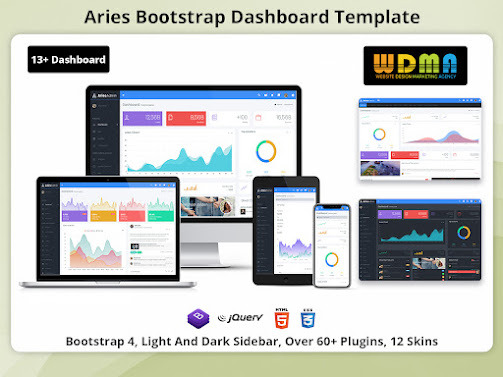
Introducing the Aries Premium Admin Template – meticulously engineered to cater to the dynamic needs of admin panels and dashboards. Featuring an extensive array of functionalities, our Responsive Web Application Kit boasts over 13 diverse dashboards tailored to empower your E-commerce operations. Today, our spotlight shines on the E-commerce dashboard, a powerhouse of data visualization. At its core lies the campaign chart, offering a comprehensive overview of impressions, top performers, conversions, and CPA metrics. This Responsive Admin Dashboard Template dashboard encapsulates vital insights ranging from new client acquisitions to product launches and invoicing activities. Seamlessly integrated modules like 'My New Clients,' 'New Products,' and 'New Invoices' provide real-time updates, ensuring you stay ahead of the curve.Beyond its E-commerce prowess, our admin template presents a plethora of features designed to streamline your workflow. Dive into the world of applications, leverage intuitive mailbox functionalities, and explore an extensive library of UI elements. With customisable widgets at your disposal, including dynamic blog widgets, charts, tables, and email templates, your possibilities are boundless. Furthermore, harness the power of maps and extensions to enhance user experience and extend functionality. Crafted with developers in mind, our combines versatility with ease of integration, enabling you to build robust solutions effortlessly.Experience the epitome of modern admin management with the Aries Admin Dashboard UI Kit – where innovation meets efficiency.
#Responsive WebApplication Kit#Responsive Admin Dashboard Template#Premium Admin Template#Bootstrap Admin Web App#Admin Dashboard Ui Kit
0 notes
Text
ALUI Developed by Thememakker - Bootstrap-Powered, Best-Ever Dashboard Template
In the fast-paced world of web development, having the right tools at your disposal can make all the difference. Thememakker, a leading web design company, brings you ALUI - an admin dashboard template that's set to revolutionize your web development projects. In this article, we'll delve into what makes ALUI a standout choice for developers.
Bootstrap Powered Excellence
ALUI powered by Bootstrap, the industry-standard framework that provides a solid foundation for web development. With Bootstrap, you can expect clean, responsive, and mobile-friendly designs, ensuring your website looks great on any device. Thememakker has taken Bootstrap and elevated it to the next level with ALUI, making it the ideal choice for any company's needs.
A Simple Three-Step Process
ALUI helps you streamline your web development process by following a straightforward, three-step process:
Download Template
First, ensure that your license aligns with your project requirements. Download the latest version of the ALUI template from Themeforest, and you're ready to kickstart your project.
Choose Template
Browse through a multitude of templates tailored for various technologies and business niches. ALUI offers a wide variety of options to cater to your specific needs.
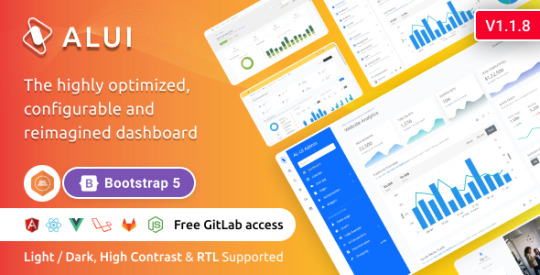
Ready to Work
You can set up a starter kit for your preferred technology or select an HTML template that suits your project requirements. ALUI ensures you have the flexibility to choose what works best for you.
Discover ALUI's Features and functionalities
ALUI is feature-rich and comes with seamless technology integration and a range of benefits, including:
Powerful Dashboard Widgets
ALUI boasts incredibly powerful dashboard widgets developed by experienced professional designers. These widgets are designed with a standardized structure to future-proof your projects.
A few lines of code are all it takes to invoke these dynamic widgets, which support various technologies and breathe life into your dashboard.
Highly Standardized UI/UX with an Easy-to-Use Interface
ALUI's highly standardized styles come with centralized elements and widgets, making it a breeze to use these elements in your projects. Whether you're working on a Hospital UI or a HR-Project management widget, ALUI's design architecture ensures versatility.
Uniquely Handcrafted Layouts
ALUI offers over 20 handcrafted layouts created by passionate web designers at Thememakker. These layouts are designed to make your project visually stunning and highly functional.
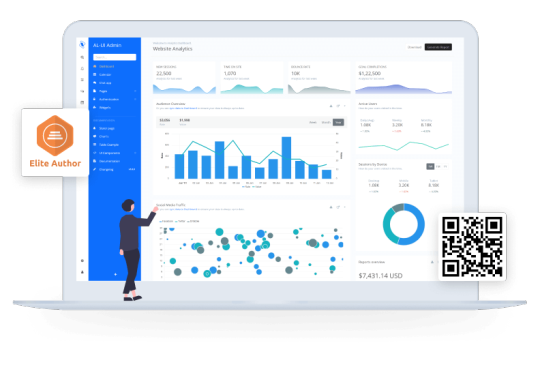
Planned Smart Updates
ALUI keeps your project up to date effortlessly. By replacing styles without requiring any coding or structural changes, ALUI ensures your project remains current. Major updates are designed to affect the core structure minimally, making the process smooth and hassle-free.
Centralized Widget Library
ALUI provides access to a centralized widget library that houses styles for creating widgets from various niches. This means you can take widgets from different niches and use them in your project, transforming it into a multi-domain platform.
Seamlessly Integrated Layouts
Uniquely designed layouts of ALUI look stunning and are logically integrated into different platforms. Whether you're using Angular, ReactJS, Laravel, HTML, VueJS, or VueJS + Laravel, ALUI makes it easy to update routes and elements in your menus.
High Contrast Theme for Better Accessibility
ALUI features a pre-built high-contrast theme that enhances accessibility. When you adhere to ALUI's standards, this theme is automatically applied to all elements, including charts and labels.
10 Reasons to Choose ALUI Admin Dashboard Developed by Thememakker
Developer-Friendly: ALUI is built on the Bootstrap 5 Design Framework, making it easy for team members to understand and integrate niche components.
Feature-Rich: ALUI offers a broad range of features that can be added to your product, impressing end-users.
Billions of Theming Possibilities: Customize your theme to match your brand using dynamic theme options.
Suitable for All: ALUI is designed for professionals, brands, and countries, offering multiple themes, layouts, business segments, and more.
SUPER Time Saver: ALUI's flexible architecture and prebuilt layouts save you time and effort in theme integration.
Simple Yet Powerful: Create stunning dashboards with ease, making ALUI one of the most productive theme design on the market.
Tons of Pages: With over 5000 pages and a variety of widgets, ALUI caters to a wide range of needs.
Made by Developers, For Developers: Empower developers with a powerful UI Kit, making development more efficient.
Easy to Customize: Once you understand ALUI's architecture, customization is a breeze, allowing you to design new widgets and dashboards with dynamic theme options.
Lifetime Updates: ALUI offers lifetime updates to stay in line with the latest trends.
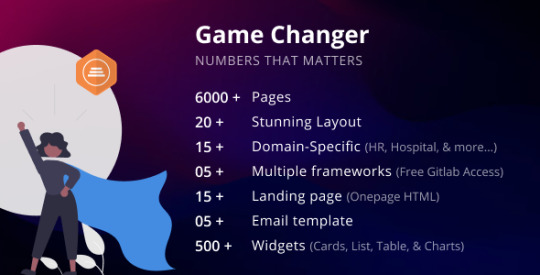
ALUI caters to a variety of technologies, including:
ReactJS: Prebuilt ReactJS dashboard with a starter kit.
Angular: Prebuilt Angular dashboard with a starter kit.
Laravel: Prebuilt Laravel dashboard with a starter kit.
HTML: A set of mighty HTML dashboard templates.
VueJS: Prebuilt VueJS dashboard with a starter kit.
VueJS + Laravel: Prebuilt VueJS + Laravel dashboard with a starter kit.
ASP .NET Core MVC: Prebuilt ASP .NET Core MVC starter kit (Coming soon).
1,000+ Satisfied Users
ALUI's designs have been loved by millions, with positive feedback from clients and users. It's a testament to the excellence of Thememakker's work.
ALUI - A New Standard in Dashboard Design
ALUI is not just an ordinary theme; it's a full library of widgets and layouts designed to take your web development services to the next level. With ALUI, you have the tools and flexibility to create stunning dashboards that meet your unique requirements.
FAQs Clear your all doubts
Do I need to purchase a license for each website?
Yes, you must purchase licenses separately for each of your websites. An extended license is required for commercial sites.
What is a regular license?
A regular license is suitable for end products that do not charge users for access or service. It can be used for a single end product.
What is an extended license?
An extended license is necessary for end products (web services or SAAS) that charge users for access or service. It can also be used for a single-end product.
Which license is applicable for SASS applications?
If you are charging users for using your SASS-based application, you must purchase an extended license for each product. A regular license is suitable when users access your service for free.
What are the lifetime updates for ALUI?
Lifetime updates are offered for all ALUI frameworks and libraries to keep them up to date with the latest trends, ensuring your projects remain current and competitive.
youtube
#ALUI Admin Dashboard#Thememakker#Web Development#Dashboard Template#Bootstrap-Powered#Developer-Friendly#Web Design#Feature-Rich Dashboard#Theming Options#Lifetime Updates#Web Development Tools#Bootstrap Framework#Layouts and Widgets#UI/UX Design#Developer Support#Dynamic Theme Options#Web Development Efficiency#Web Development Projects#User-Friendly Dashboard#Web Development Benefits#Web Development Revolution#Thememakker's ALUI#Responsive Design#Web Development Excellence#Widget Library#Web Development Flexibility#Hand-Crafted Layouts#High Contrast Theme#Smart Updates#Bootstrap Integration
0 notes
Text
What Is the Best Video Conferencing Software for Distributed Teams?
Introduction: The Dawn of Remote Working
Times are changing. Offices aren't restricted to a location anymore—now they're virtual that cover whole continents. Teams of individuals work together now from their living rooms, cafes, and even from the peak of mountains. That's introduced an imperative requirement along with it: crystal clear, glitch-free video communication.

What Makes a Great Video Conferencing Solution?
Not all conferencing platforms are created equal. A great platform needs to be easy to use, lag-free, secure, and full of collaboration features. It needs to integrate with calendars, document-sharing software, and offer real-time chat. Elegant yet simple—that's the holy grail.

Scalability: From Startups to Global Enterprises
Whether you’re a five-person startup or a multinational juggernaut, your video conferencing app must grow with you. The best solutions offer flexible plans and seamless scalability—no growing pains, just smooth transitions.
Security First: Protecting Conversations and Data
Data breaches are a nightmare. That’s why best video conferencing apps for remote meeting prioritize encryption, multi-factor authentication, and admin controls. Confidentiality isn’t a feature—it’s a necessity.
Zoom: The Reigning Champion
Zoom exploded in popularity for a reason. It's easy to use, holds 1,000 participants, and offers features like screen sharing, virtual backgrounds, and breakout rooms. It's the gold standard in remote meetings.
Microsoft Teams: The Business Darling
Designed for business, Microsoft Teams is more than a video app. It's a communication hub that blends chat, video, file sharing, and app integration—all within your Office 365 ecosystem.
Google Meet: Integration Meets Simplicity
Part of the Google Workspace ecosystem, Google Meet is ideal for users who value simplicity and speed. It’s browser-based, so there’s no need for downloads. Just click the link and you’re in.
Cisco Webex: Enterprise-Level Robustness
If you’re all about control and customization, Webex delivers. It’s packed with features like real-time translations, background noise removal, and powerful admin dashboards. Webex is enterprise-grade to its core.
Skype: A Timeless with a Twist of Modernity
Skype is old news, but that doesn't mean it's outdated. With improved UI, real-time captions, and live translation, it's a good bet for small businesses and personal conferences alike.
Teaching Conferencing Apps – Classroom Tools
The cloud classroom. Teachers don't merely require video tools—teachers require engagement tools, grading tools, attendance tools. That's where conferencing apps for teachers shine.

BigBlueButton: Built by Teachers
Open-source and specifically designed for instruction, Big Blue Button offers whiteboards, polls, and breakout groups. It integrates seamlessly with LMS platforms like Moodle and Canvas.
Google Classroom + Meet: Efficient Schooling
Google Classroom goes hand in hand with Google Meet. It simplifies assignments, grading, and communication—while keeping video conferencing at a tap away. It's the ultimate one-stop education bundle.
Jitsi Meet: Open-Source, Education-Focused
Free, secure, and browser-based, Jitsi Meet is a favorite among teachers who want total control for free. No account required. Just share the link and start teaching.
Features That Matter: Screen Sharing, Chat, Recording
Any decent video conferencing application must have these basic features: screen sharing for demos, chat for sidebar discussions, and recording for asynchronous students or absent colleagues. These are no longer amenities—they're essentials.
Cross-Device Compatibility: Meeting Anytime, Anywhere
Laptops, smartphones, tablets—your conferencing solution must be able to play nice with all of them. If you're working from an Android phone on the train or a MacBook in your home kitchen, the experience should be fluid.
How Business Mobile App Development Brings Conferencing to the Forefront
Companies can go beyond off-the-shelf solutions using specially created mobile apps. benefits of mobile app development for business include custom user interfaces, better analytics, better branding, and better security options. These custom solutions make remote teams work like never before.
Final Thoughts: Selecting the Right Tool for Your Team
whether teaching, enterprise coordination, or social team check-ins. The trick is finding what's most important to your workflow and matching the tool to make your team's efficiency shine.
0 notes
Text
Create Impactful and Smarter Learning with Custom MERN-Powered LMS Solutions
Introduction
Learning is evolving fast, and modern education businesses need smarter tools to keep up. As online training grows, a robust learning management software becomes essential for delivering courses, tracking progress, and certifying users. The global LMS market is booming – projected to hit about $70+ billion by 2030 – driven by demand for digital learning and AI-powered personalization. Off-the-shelf LMS platforms like Moodle or Canvas are popular, but they may not fit every startup’s unique needs. That’s why custom learning management solutions, built on flexible technology, are an attractive option for forward-looking EdTech companies. In this post, we’ll explore why Custom MERN-Powered LMS Solutions (using MongoDB, Express, React, Node) can create an impactful, smarter learning experience for modern businesses.
Understanding the MERN Stack for LMS Development
The MERN stack combines four open-source technologies: MongoDB (database), Express.js (backend framework), React.js (frontend library), and Node.js (server runtime). Together, they enable developers to write JavaScript across the entire application. For an LMS, MERN’s unified JavaScript stack means faster development and easier maintenance. React’s component-based UI makes creating interactive dashboards and course pages smoother, while Node.js and Express handle data and logic efficiently. Importantly, both Node and MongoDB are built for scale: Node’s non-blocking I/O can handle many users at once, and MongoDB can store huge volumes of course and user data. In practice, MERN apps can be deployed in a microservices or containerized architecture (using Docker/Kubernetes) to ensure high availability. This means your custom LMS can grow with your audience – for example, MongoDB supports sharding so the database can span multiple servers, ensuring the system stays up even if one server fails.
Key Features of Custom MERN-Powered LMS Solutions
A tailored LMS can include all the features your organization needs. Typical components of learning management platforms include:
Course Management: Create, organize, and update courses and modules.
User and Role Management: Register learners, assign roles (students, instructors, admins), and control access.
Interactive Content: Upload videos, presentations, PDFs, and embed quizzes or coding exercises.
Assessments & Certification: Build quizzes, track scores, and automatically issue certificates to successful students.
Discussion Forums & Collaboration: Facilitate peer-to-peer learning with chat, Q&A forums or group projects.
Reporting & Analytics: Dashboard insights into learner progress, completion rates, and engagement.
Integrations: Connect with other tools via APIs – for example, integrating Zoom or MS Teams for live classes, or embedding third-party content libraries.
Branding & Custom Interface: White-label design with your logo and color scheme, for a seamless brand experience.
Because the MERN stack is so flexible, a custom LMS can add niche features on demand. For instance, you could include gamification (points, badges, leaderboards) to boost engagement, or integrate e-commerce capabilities (Sell courses with Stripe or PayPal). These integrations and customizations may cost extra, but they let you align the system with your exact workflow and goals. In short, a MERN-based LMS can combine the best learning management systems features (like content libraries and mobile responsiveness) while still being fully under your control.
Leveraging AI to Enhance Learning Experiences in Custom MERN-Powered LMS Solutions
AI is transforming how students learn. In a MERN-powered LMS, you can embed AI tools to personalize and streamline education. For example, artificial tutors can adjust to each learner’s pace, and chatbots can answer questions 24/7. AI-driven adaptive learning platforms will tailor lesson plans based on a student’s strengths, weaknesses, and progress. They can suggest next steps or additional resources (“intelligent recommendations”) and even automatically generate or grade quizzes. Similarly, voice and chatbot assistants become “24/7 tutors, answering student queries, explaining concepts, and assisting with assignments,” making education more responsive.
These AI enhancements lead to higher engagement and better outcomes. For instance, personalized content delivery keeps learners motivated, and instant feedback accelerates their progress. Research shows personalization boosts achievement in core subjects, and AI is a key enabler. In practice, a custom MERN LMS could leverage AI services (via APIs or microservices) for recommendation engines, automated content tagging, and data-driven analytics. Over time, the system learns what works best for each user – a truly smarter learning platform that continuously improves itself.
Ensuring Multi-Device Accessibility and Integration Capabilities in Custom MERN-Powered LMS Solutions
Today’s learners switch between laptops, tablets, and phones, so any LMS must be mobile-friendly. A MERN-based platform can be built with responsive design or native mobile apps in mind. The frontend (React) easily adapts layouts for different screen sizes, ensuring the LMS looks and works well on desktops and smartphones. Offline modes (caching content on mobile apps) can be added for uninterrupted access even without internet.
Integration is another must-have. Modern LMS solutions rarely stand alone. A custom MERN LMS can include connectors or plugins for video conferencing (Zoom, Teams), calendars, HR systems, or content libraries. These LMS integrations ensure seamless workflows and a better user experience. For example, automatically syncing course rosters with your HR database saves admin time, and integrating payment gateways lets you monetize courses directly. Overall, a custom MERN LMS can act as a central hub, tying together video calls, documentation, social features, and more into one consistent platform.
Scalability and Deployment Strategies for Custom MERN-Powered LMS Solutions
A key advantage of MERN is scalability. MongoDB and Node.js were designed to grow with your needs. In practice, you would deploy your LMS on cloud infrastructure (AWS, Azure, GCP), using containerization (Docker, Kubernetes) to manage resources. This means you can scale horizontally: spin up more instances of your Node/Express servers or MongoDB shards as the user base grows. For example, MongoDB’s sharding lets the database distribute data across servers, so no single point of failure will crash your app. Likewise, stateless Node servers can be cloned behind a load balancer, handling thousands of concurrent users (ideal for a crash course day!).
For deployment, continuous integration and continuous deployment (CI/CD) pipelines automate updates: changes to code (React components or backend logic) can be tested and released rapidly. This agile pipeline means improvements are delivered safely and often. Cloud hosting also offers global content delivery networks (CDNs) and caching to speed up course content downloads worldwide. In short, a MERN LMS can start small but expand seamlessly – serving a few dozen students or millions – with careful cloud architecture and modern devops practices.
Agile Development Methodology in Custom MERN-Powered LMS Projects
Building a custom LMS with MERN is best done with agile development. Agile (Scrum or Kanban) means working in short sprints and constantly gathering feedback from stakeholders. This approach enables faster delivery of working software by breaking development into smaller iterations and focusing on high-priority features. For an EdTech startup, that means you can release a minimum viable LMS quickly (core courses and user login), then iteratively add features like assessments, forums, or mobile apps, based on user feedback.
Agile also keeps your team aligned with business goals. Regular demos let product leads and instructors see progress early and adjust priorities. The continuous feedback loop means the final LMS better meets expectations and achieves higher satisfaction. Crucially, Agile embraces change: if a new learning requirement or tech emerges, it can be planned into the next sprint. Using Agile in a MERN LMS project helps ensure the platform stays on track with both educational goals and evolving market demands, delivering value early and often.
Pricing Models and Customization Options for MERN-Powered LMS Solutions
Custom LMS pricing varies widely, depending on features and usage. Common models include subscription-based (per-user or per-active-user), pay-per-use, one-time license fees, or even open-source/free solutions. In a custom scenario, you might negotiate a flat development fee plus ongoing support, or an annual per-user fee once the LMS is built.
Be mindful of hidden costs. Beyond base licensing or development, extras often include setup, integrations, and maintenance. For example, integrating your MERN LMS with a CRM, single sign-on, or advanced analytics service usually comes at extra cost. Similarly, hosting fees (cloud servers, bandwidth) and support contracts add to the total. It’s wise to plan for these from the start. The upside is that a custom MERN-powered LMS solution can be tailored – you only pay for exactly the functionality you need, no more. Plus, you avoid paying for unnecessary modules that bloated commercial LMS platforms often include.
Conclusion
Custom MERN-powered LMS solutions offer a compelling path for EdTech startups and training companies. By leveraging a unified JavaScript stack (MongoDB, Express, React, Node), development teams can deliver a robust LMS learning platform that is modern, scalable, and finely tuned to your audience. These systems combine essential learning management software features (content delivery, assessments, analytics) with cutting-edge enhancements (AI personalization, seamless integrations, multi-device support) – all under your brand. With agile methods, the platform can evolve in step with your needs, while cloud deployment ensures it can grow effortlessly. In short, a custom MERN LMS gives you the best learning management system for your business: a solution built exactly for you. It’s a strategic investment in smarter learning that will pay off in engagement, effectiveness, and flexibility for years to come.
#learning management software#learning management solutions#LMS platforms#best learning management systems#best learning management software#LMS learning platform#Custom MERN-Powered LMS Solutions
0 notes
Text

Hotel Booking App Development with Cost and Key Features Guide for Budget-friendly Solutions
If you’re in the hotel or hospitality business, one thing is clear: convenience has become currency. Guests no longer wait to call the front desk or scroll through travel sites. They expect to search, book, pay, and manage everything from their phones in seconds.
This sudden shift in user behavior, a cross worldwide combined with rapid travel tech evolution, is why hotel booking app development has become not just a digital upgrade, but a business necessity.
Whether you run a boutique hotel, a nationwide chain, or a new travel startup, having a mobile booking solution offers more than just ease; it brings control over your brand, revenue, and customer experience.
According to the Data Record Website: Business of Apps, the travel app industry generated $629 billion revenue in 2022, with hotels and accommodation responsible for the majority of that.
Here’s why 2025 is the right time to invest:
Post-pandemic travel is booming, with more users prioritizing mobile-first bookings.
Online travel agencies (OTAs) like Booking and Airbnb charge heavy commissions, so owning your app saves long-term costs.
Customer expectations are higher than ever because of AI and with the fast booking, real-time availability, and personalized experiences now the standard.
AI and automation can now simplify everything from guest communication to dynamic pricing.
In short, a custom hotel booking app can turn one-time guests into loyal customers and set your business up for long-term success.
1. Frontend – What the User Sees and Interacts With
This is the guest-facing side of your app. It includes the user interface (UI), design elements, and booking flow.
A well-built frontend should allow users to:
Search hotels based on location, dates, pricing, and room type
View hotel listings with images, reviews, amenities, and descriptions
Check real-time availability of rooms
Securely book and pay through integrated payment gateways
Manage bookings, cancellations, and customer profiles
A seamless frontend experience makes all the difference, especially in the travel space where users expect fast, intuitive interactions.
2. Backend – The Brain Behind the App
The backend powers all the logic, data handling, and third-party integrations that make your app functional.
Here’s what it typically includes:
Database systems to store hotel listings, user data, bookings, and payment history
APIs and integrations to connect with maps, calendar, property management systems (PMS), and payment processors like Stripe or Razorpay
Admin dashboard for hotel owners to manage availability, pricing, offers, and customer communication.
Security protocols to ensure data privacy, authentication, and payment safety
Cloud infrastructure (like AWS or Firebase) for scalability and uptime
Together, the frontend and backend create a smooth booking experience that’s accessible 24/7, whether your guest is booking from across the world or down the street.
What Are the Critical Features of a Hotel Booking Application?
When the end users download a hotel booking app, whether from 3rd party platform or Android Play Store or an iOS Store platform, they’re not just looking for booking room online rooms. They expect convenience, trust, and control.
That means your app needs more than just a booking button. It needs the right features to simplify the experience, personalize the journey, and build long-term loyalty.
Here’s a detailed look at the essential features your hotel booking app should have:
Smart Search with Filters
Allow users to search by city, check-in/check-out dates, price range, ratings, amenities, and more. The more relevant the filters are, the faster users find what they want.
Real-Time Availability and Room Selection
Your app must reflect live room inventory, so users never face overbooking or incorrect listings. Integrating with your property management system (PMS) ensures this accuracy.
Detailed Hotel and Room Profiles
Each listing should include high-quality images, amenity details, policies, room descriptions, and guest reviews. Think of this or imagine it as your digital shop.
Secure Booking and Payment Gateway
Support for credit/debit cards, mobile wallets, and even UPI or PayPal, depending on your target market. It also includes SSL encryption, OTP verification, and easy refunds.
Booking Management Dashboard
Guests should be able to view, modify, or cancel bookings easily. Add calendar sync and in-app reminders to enhance usability.
Ratings and Reviews
User-generated reviews build trust and drive decisions. Encourage feedback and display ratings prominently to help new users convert faster.
Multi-Language and Multi-Currency Support
If you're targeting international travelers, this isn’t optional. It helps create a seamless experience and boosts booking confidence.
Push Notifications and Offers
Use notifications to share last-minute deals, loyalty rewards, or booking reminders. Personalization increases open rates and re-engagement.
In-App Chat or Support
Allow users to chat with support teams or hotel staff for questions, changes, or special requests, all within the app.
Loyalty Programs and User Profiles
Let users earn rewards, save preferences, and track past bookings through a personalized profile. Great for retention and upselling.
What Features Does AI Bring to Hotel Booking App Development?
In 2025 and beyond, hotel booking apps aren’t just digital reservation systems; they’re becoming intelligent travel assistants. Thanks to Artificial Intelligence, modern apps can learn from user behavior, automate complex tasks, and deliver real-time personalization that feels natural and effortless.
If you're serious about building a future-ready product, integrating AI is no longer optional; it’s a strategic advantage.
Here’s how AI takes hotel booking app development to the next level:
Personalized Hotel Recommendations
Artificial general intelligence (AI) deeply analyzes user preferences, location history, budget, and past booking data with the help of Predictive Analytics to suggest tailored hotels. This creates a curated experience that increases conversion rates and guest satisfaction.
Dynamic Pricing and Revenue Optimization
Different AI algorithms can automatically adjust room rates based on demand, seasonality, local events, competitor pricing, and past data Predictive Analytics. This ensures competitive pricing while maximizing profits without manual effort.
Predictive Demand Forecasting
Predictive Analytics in AI helps hotel owners forecast booking trends, occupancy rates, and peak periods using a minimum of 6 months of historical data. With this insight, they can optimize marketing campaigns, staffing, and inventory.
AI-Powered Chatbots and Virtual Assistants
Live Chatbots can handle multiple booking queries, check-in instructions, or FAQs 24/7, reducing the load on hotel staff while improving response time. Live assistants can also upsell room upgrades or services based on guest profiles.
Sentiment Analysis from Reviews
AI tools can scan guest reviews to detect sentiment trends, flagging potential issues like cleanliness or staff behavior. It gives hotel managers valuable feedback in real time.
Fraud Detection and Booking Verification
Machine learning (ML) models can spot suspicious payment behavior, prevent double bookings, flag unusual activity, and reduce risks.
By embedding these AI-powered fraud detection features into your hotel booking app, you're not just offering convenience but creating a more intelligent, intuitive, and profitable booking ecosystem.
Now, The Question is, how to Develop a Hotel Booking App with AI?
So now that you know what AI can do, the big question is: how do you actually build it into your hotel booking application?
Developing an intelligent, AI-enabled app isn’t just about adding a live chatbot or smart recommendations system. It’s about planning your tech stack, choosing the right AI models, and working with a development team that understands completely both travel and ML.
Here’s a simplified roadmap on how to develop a hotel booking app with AI:
1. Start With the Right Problem
Start by identifying the areas of your booking flow where AI can drive measurable impact. Is it in delivering personalized search results, optimizing dynamic pricing, or extracting insights from guest reviews?
A well-defined use case ensures AI integration delivers real value, not just buzzword appeal.
2. Collect and Structure the Right Data
AI needs fuel, and that fuel is data. Gather insights from booking behavior, user preferences, cancellation rates, seasonal trends, and review sentiment. Ensure your data is clean, relevant, and ethically sourced to support accurate, responsible AI decisions.
3. Choose Your AI Tools and APIs
There are plenty of ready-made AI tools that you don’t have to build from scratch:
Chatbots: Google Dialogflow, Microsoft Bot Framework
Recommendation engines: Amazon Personalize, TensorFlow
NLP sentiment analysis: IBM Watson, MonkeyLearn
Dynamic pricing: Custom ML models via Python or third-party tools
Choose based on your tech stack, goals, and integration requirements.
4. Work With AI-Capable Developers
AI isn’t plug-and-play. You’ll need machine learning engineers and app developers to train models, build APIs, and test outputs in real booking scenarios. That’s where a specialized team really matters.
5. Test and Refine Before Launch
Once AI is integrated, test your system with real users.
Does the chatbot give relevant answers?
Are recommendations useful?
Is pricing logic working as intended?
Fine-tune is based on real data, not assumptions.
What Is the Cost to Develop a Hotel Booking App in 2025?
Let’s talk numbers.
Whether you're a hotel owner building an in-house solution or a tech startup launching the next big travel platform, understanding the development cost is critical for planning, funding, and long-term scaling.
The truth is there’s no one-size-fits-all price. Your total investment will depend on app complexity, team size, platform (iOS, Android, Web), and, of course, whether you’re integrating AI.
But to give you a realistic picture, here’s what you can expect:
For a basic hotel booking app without AI, designed with essential features like search, listing, booking, and payment, you can expect to spend between $20,000 and $40,000. This is ideal for single-property hotels or early-stage MVPs.
If you're building a mid-level app with standard functionalities such as reviews, filters, profile management, and limited admin tools, the development cost typically falls in the range of $40,000 to $75,000. These apps are more scalable and suitable for small hotel chains or regional brands.
Now, if you’re integrating AI-powered features like personalized recommendations, dynamic pricing, or smart chatbots, the cost increases accordingly. A full-featured hotel booking app with AI integration can range from approx. $75,000 to $150,000 or more, depending on the complexity of the AI models and third-party tools used.
At the high end, an enterprise-grade hotel booking platform built with fully customized AI systems, multi-property support, deep analytics, and backend automation could cost $150,000 to $300,000+. These are typically used by large chains or tech-first hospitality platforms with global ambitions.
Ongoing Costs to Keep in Mind:
App maintenance and updates
Server and cloud infrastructure (especially with AI models)
Customer support or chatbot tuning
App Store/Play Store publishing fees
Performance monitoring and analytics
The bottom line? If you truly want to build a hotel booking app that users trust and that scales with your business, it’s worth investing in quality.
A well-structured build not only avoids technical debt but improves customer retention, reduces manual work, and sets you up for long-term revenue.
How Do You Choose the Right Hotel Booking App Development Company?
Picking the right custom development partner can make or break your hotel booking application or website. It’s not just about writing code; it’s about working with a technical professional that deeply understands AI, ML and the online hospitality industry and has proven experience in it. The right partner knows how different users think and has the technical depth to deliver a reliable, scalable product.
Here’s what to look for when evaluating a hotel booking app development company in India (IN) or in United States (USA):
First, check for industry-specific experience. Has the team built booking platforms before? Do they understand the needs of travelers, hoteliers, and operations teams? A company that’s worked with hospitality brands will ask better questions and deliver smarter features.
Next, evaluate their AI and integration capabilities. If you plan to build a smart app with dynamic pricing, recommendation engines, or chatbot support, the team needs experience in machine learning, third-party API integrations, and tools like Firebase, Dialogflow, or AWS.
UI/UX design is equally important. The company should have in-house designers who understand how to build clean, intuitive, mobile-first interfaces that convert casual browsers into loyal bookers.
Transparency matters, too. A trustworthy partner will walk you through the development roadmap, share milestones, and break down costs upfront, with no guesswork and no fluff. Ask about their development methodology, whether they work in agile sprints, and how often they provide updates or a real time demos.
Finally, look for post-launch support. Your hotel booking app isn’t a one-time project; it’s a digital product that needs updates, improvements, and fast fixes when issues arise.
Choose a team that offers maintenance, monitoring, and ongoing performance tuning.
In summary, the best hotel booking app development company won’t just code your idea. They’ll help you shape it strategically, build it efficiently, and grow it confidently.
Is Building Your Own Hotel Booking App Worth It?
If you’ve made it this far, you’re likely still asking yourself the most important question:
Is developing a hotel booking app actually worth the investment?
The short answer? Yes, if you think long-term.
Owning your own hotel booking app gives you full control over how guests interact with your brand. Instead of relying on third-party platforms that take hefty commissions and limit customer data access, a custom app puts you in charge of the entire guest journey, from search to checkout to follow-up.
It also opens the door to meaningful innovation. With AI-powered personalization, real-time booking visibility, and in-app communication, you’re able to deliver a smoother, smarter, and more memorable experience, which translates to better reviews, more repeat guests, and increased revenue.
For new or old startups and hotel chains alike, this isn’t just about keeping up; it’s about leading. As the hospitality industry leans more into mobile-first experiences and automation, early adopters of intelligent booking platforms will have a clear competitive advantage.
That said, success depends on choosing the right tech stack, building the right features, and partnering with a hotel booking app development company that knows how to deliver measurable results.
Build a Hotel Booking App That Guests Trust
Ready to create a high-performance, AI-powered hotel booking app?
Kody Technolab can help you turn that vision into a scalable, guest-friendly platform. Let’s build something travelers and your business will love.
#hotel booking app#Hotel Booking App Development#app development#app development cost#flutterdevelopment
0 notes
Text
Best Cryptocurrency Exchange Development Company in UK

So, you’ve been bitten by the crypto bug and are thinking of launching your own exchange? Nice move! The crypto world is booming, and the UK—yep, that little island of innovation—is one of the hottest spots on the map. But here’s the big question: Who should you trust to build your dream crypto exchange?
Let’s dive deep into the world of cryptocurrency exchange development and help you find the Best Cryptocurrency Exchange Development Company in UK. By the end of this blog, you’ll know what to look for, who’s leading the pack, and how to choose your ideal tech partner.
🚀 Why Crypto Exchanges Are the New Gold Mines
Imagine having a machine that keeps printing money—sounds wild, right? That’s what a well-built crypto exchange can feel like. With the rise of Bitcoin, Ethereum, and thousands of altcoins, people are constantly trading, buying, and selling. And where do they do it? On crypto exchanges.
💰 But Why Start a Crypto Exchange?
High Revenue Potential – Earn through trading fees, listing fees, and more.
Growing Market – The global crypto market cap is in trillions!
Innovation Friendly – You can add new features, tokens, DeFi tools—you name it.
UK Is Crypto Ready – With clearer regulations and a tech-savvy audience.
🧠 What Is a Cryptocurrency Exchange, Anyway?
Let’s break it down real quick: A cryptocurrency exchange is like your stock market app, but for crypto. It lets users trade digital currencies either for other cryptos or traditional money (called fiat).
Types of Crypto Exchanges
Centralized Exchanges (CEXs) – Fast, easy, user-friendly (e.g., Binance, Coinbase)
Decentralized Exchanges (DEXs) – No middlemen, powered by smart contracts (e.g., Uniswap)
Hybrid Exchanges – A combo of both, aiming for the best of both worlds.
🏗️ What Makes a Great Crypto Exchange?
Before we talk about the best development company, let’s see what a top-tier exchange should have:
✅ Must-Have Features
User Authentication & KYC Integration
Wallet Integration (Hot & Cold Wallets)
Multi-Currency Support
Advanced Trading Engine
Liquidity Management
Admin Dashboard
Security Protocols (SSL, DDoS protection, 2FA)
Mobile-Friendly UI
Multi-Language Support
Crypto Payment Gateway
Whew! That’s quite a list, right? But don’t worry, the Best Cryptocurrency Exchange Development Company in UK will tick all these boxes—and more.
🇬🇧 Why the UK Is a Hub for Crypto Innovation
Let’s give some credit where it’s due. The UK is not just about tea and football—it’s buzzing with fintech talent and blockchain brilliance.
📍 Key UK Crypto Stats:
The UK is among the top five countries with the highest crypto adoption.
London is home to several blockchain startups and accelerators.
The FCA (Financial Conduct Authority) is working to regulate the market better, making it safer for investors and builders alike.
So, if you’re launching a crypto exchange, setting up shop in the UK or hiring a UK-based firm just makes sense.
👑 Drumroll, Please: Who Is the Best Cryptocurrency Exchange Development Company in UK?
Alright, time to spill the beans.
🥇 Shamla Tech: The Undisputed Crypto Champion
If you’ve done even a little bit of research, you’ve probably heard the name Shamla Tech buzzing in crypto forums and tech circles. And for good reason.
Why Shamla Tech?
Years of Experience – They’ve been in the blockchain game since the early days.
Custom Exchange Solutions – Whether it’s CEX, DEX, hybrid, or white-label—they’ve got you.
Security First – Multi-layer security architecture is their bread and butter.
End-to-End Services – From brainstorming to deployment and post-launch support.
AI & Blockchain Integration – Cutting-edge tech? They’re on it.
Transparent Pricing – No hidden costs or vague proposals.
Strong Client Portfolio – Trusted by startups and enterprises worldwide.
Shamla Tech truly lives up to its name as the Best Cryptocurrency Exchange Development Company in UK.
💼 Services Offered by Shamla Tech
Let’s take a peek at what Shamla Tech brings to the crypto table:
📦 Custom Crypto Exchange Development
Tailor-made to fit your business model. Want to clone Binance? Or launch something brand-new? They’ve got the code and the creativity.
🧾 White-Label Exchange Solutions
Need a ready-to-go platform? Shamla’s white-label products can be launched in under two weeks with custom branding and features.
🔐 Crypto Wallet Development
Cold wallets, hot wallets, multi-sig, and even hardware wallet integrations—they’ve got it covered.
⚙️ Smart Contract Development
Essential for DEXs and DeFi integrations. Shamla writes, tests, and audits smart contracts with military-grade security.
📲 Mobile App Development
Your users are mobile. Your exchange should be too. Shamla delivers sleek, secure Android & iOS apps.
🌐 DeFi and NFT Integration
Want to stand out in the crypto crowd? Add NFT marketplaces, staking pools, or DeFi lending to your exchange.
🔍 How to Choose the Right Development Company
Even if Shamla Tech looks like a no-brainer, here’s a checklist to help you vet any crypto exchange development company in the UK.
🧾 Ask These Questions:
How many crypto projects have they delivered?
Do they offer post-launch support?
Can they integrate advanced features like margin trading or staking?
Do they handle regulatory compliance?
Are their solutions scalable and secure?
If you get vague answers, run. Fast.
🧩 What Makes Shamla Tech Stand Out?
There are plenty of fish in the sea, but here’s why Shamla Tech is the biggest catch:
Blockchain Expertise – Not just crypto. They’re blockchain problem-solvers.
Agile Development – Fast iteration, faster launches.
Cross-Border Experience – From London to Dubai, their reach is global.
In-House Developers – No freelancers. No outsourcing.
Dedicated Project Managers – You won’t be left on read.
🛡️ Security Is Not Optional—It’s Mandatory
With crypto, security is everything. Users won’t trust you unless your platform is armored up like Fort Knox.
Shamla’s Security Stack Includes:
DDoS Protection
End-to-End Encryption
Anti-Phishing Modules
Cold Wallet Integration
KYC/AML Compliance
2-Factor Authentication
Rest easy knowing your platform is shielded from attacks and fraud.
⏱️ How Long Does It Take to Build a Crypto Exchange?
Great question. It really depends on your needs.
White-Label Exchange – As fast as 10-15 days.
Custom Exchange – 2-4 months, depending on complexity.
Shamla Tech is known for hitting deadlines without sacrificing quality.
💸 What’s the Cost to Build a Crypto Exchange?
It’s not free, obviously, but it doesn’t have to cost a fortune.
Basic Platform – Starts at around $25,000
Mid-Tier with More Features – Around $50,000-$75,000
High-End Custom Solution – $100,000 and up
Shamla offers custom quotes based on your goals and budget.
🎯 Real-World Use Cases: Shamla in Action
Here’s a quick glance at some of Shamla Tech’s wins:
Helped a UK-based fintech launch a regulated crypto exchange in under 90 days
Integrated DeFi staking for a Swiss platform with zero downtime
Created a hybrid exchange for a Dubai client with AI-powered trading bots
💬 What Clients Say About Shamla Tech
“Working with Shamla Tech was a game-changer. They not only built our exchange but helped us navigate the legal maze in the UK. Highly recommended!” – James R., London-based crypto startup founder
“Their team knew exactly what we needed. From KYC to liquidity APIs—they nailed it.” – Priya S., CTO, European fintech company
🔮 What’s Next for Crypto Exchanges?
The future looks bright—especially if you’re launching with the right tech partner. AI-powered bots, multi-chain integrations, NFTs, and DeFi tools will define the next generation of crypto exchanges.
And guess what? Shamla Tech is already building them.
🎁 Final Thoughts: Make the Right Move Today
Building a crypto exchange is like launching a spaceship. It needs fuel (funds), a skilled crew (developers), and a sturdy design (platform). Choosing the right partner makes all the difference.
So, if you’re searching for the Best Cryptocurrency Exchange Development Company in UK, now you know the answer: Shamla Tech. They're trusted, talented, and totally tuned in to the future of finance.
📞 Ready to Build? Let’s Talk
Whether you're dreaming of the next Binance or a niche DEX for your community, Shamla Tech is your best bet in the UK.
👉 Visit shamlatech.com to book your free consultation today.
#CreateACryptocurrencyExchange#BuildYourOwnCryptoExchange#ShamlaTech#LaunchYourCryptocurrencyExchange#CryptoDevelopmentExperts
0 notes
Text
Fantasy Cricket App Development in 2025: Features, Tech Stack & Cost Breakdown
The rise of fantasy sports is rewriting the playbook for digital engagement in India, and at the center of this revolution is fantasy cricket. As one of the most-loved sports in the country, cricket offers a perfect foundation for fantasy gaming platforms that attract millions of users, especially during major tournaments like IPL and ICC events. If you're considering building your own fantasy cricket app in India, 2025 is the ideal time to jump in.
This guide covers everything you need to know—from features and tech stack to development costs—to help you launch a successful fantasy cricket app.
Why Invest in Fantasy Cricket App Development?
India is home to over 160 million fantasy sports users, and that number is expected to grow with improved internet access and smartphone penetration. A well-designed fantasy cricket platform not only taps into this massive fan base but also opens doors to diverse monetization models—entry fees, in-app purchases, brand partnerships, and more.
This makes fantasy cricket app development a high-potential investment for startups, entrepreneurs, and even existing sports brands.
Must-Have Features for a Fantasy Cricket App in 2025
To stand out in a competitive space, your app needs more than just basic functionality. Here's a breakdown of essential features:
1. User Registration and Login
Social logins (Google, Facebook, Apple ID)
OTP-based mobile verification for security
2. Live Match Integration
Real-time match updates
Ball-by-ball commentary feed
Player stats and live scores synced with official data
3. Create & Join Contests
Public, private, and mega contests
Entry fee and prize pool customization
Leaderboards with real-time rankings
4. Fantasy Team Building
Player selection based on credits and match format
Captain/vice-captain selection with multiplier effects
Notifications for lineup announcements
5. Wallet and Payment Integration
Secure in-app wallet for deposits and withdrawals
Integration with Razorpay, Paytm, Stripe, or UPI
Transaction history and withdrawal status
6. Admin Dashboard
Manage matches, users, contests, and payments
Ban/suspend users or edit contest details
Real-time revenue analytics and reporting
7. Referral & Bonus Systems
Promote viral growth via referral codes
Signup bonuses and loyalty rewards to boost engagement
Recommended Tech Stack
Choosing the right technologies ensures performance, scalability, and security. Here’s a tech stack ideal for a fantasy cricket app in India:
Frontend (Mobile App): Flutter or React Native for cross-platform support
Backend: Node.js or Django for high-speed, scalable server architecture
Database: MongoDB or PostgreSQL
Real-Time Data Sync: Firebase or Socket.IO
Payment Gateway: Razorpay, Paytm, or Stripe
Push Notifications: Firebase Cloud Messaging (FCM)
Hosting: AWS, Google Cloud, or Azure
Many gaming app development companies specialize in these tools and offer custom development packages tailored to Indian audiences.
Development Cost Breakdown
The cost of building a fantasy cricket app depends on several factors, including features, platform support (Android/iOS), UI/UX complexity, and third-party API integrations.
Here’s an approximate cost range:
Development Stage
Estimated Cost (USD)
UI/UX Design
$2,000 – $5,000
App Development (MVP)
$8,000 – $15,000
Backend + API Integration
$5,000 – $10,000
Admin Panel
$3,000 – $6,000
Real-Time Data Feed APIs
$2,000 – $4,000/year
Total (Basic to Advanced App)
$20,000 – $40,000
Note: Costs may vary based on developer rates and region. Partnering with experienced gaming app development companies in India may offer better affordability without compromising on quality.
Final Thoughts
As cricket continues to dominate the Indian sports scene, the demand for intuitive, feature-rich fantasy platforms will only grow. Whether you're a startup entering the market or a sports brand looking to enhance fan engagement, investing in fantasy cricket app development offers excellent growth potential.
Choosing the right development partner, defining your feature set clearly, and focusing on user experience are key to standing out in this competitive landscape.
#real money game development services#fantasy cricket app development#appcurators#mobile apps#fantasy
0 notes